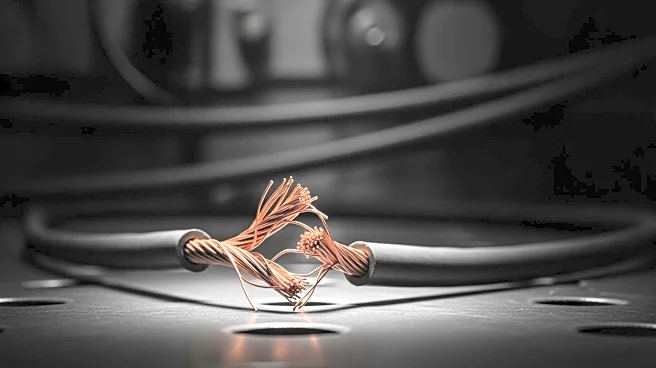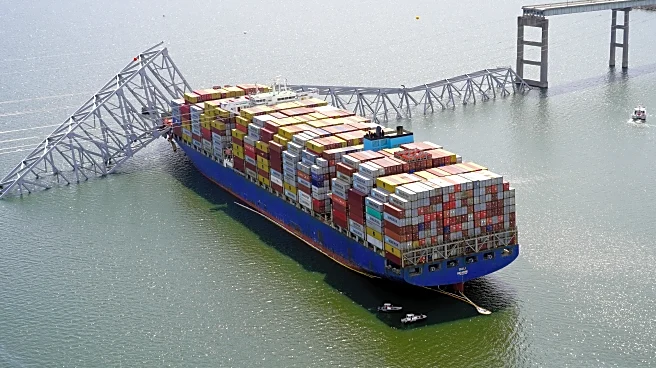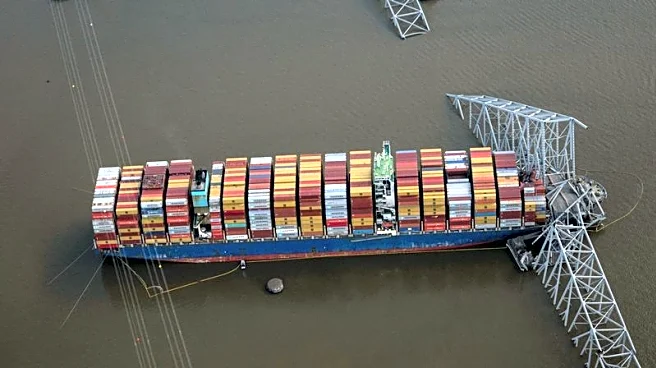What's Happening?
The National Transportation Safety Board (NTSB) has identified a loose wire as the cause of a power failure on the cargo ship Dali, which crashed into Baltimore's Francis Scott Key Bridge in March 2024.
The incident resulted in the deaths of six construction workers and the destruction of the bridge. The NTSB is holding a hearing to determine the probable cause and recommend safety measures. The board suggests periodic inspections of high voltage switchboards and changes to allow ships to recover from power loss more quickly. The crash has prompted a review of bridge safety, focusing on structures built before 1991 that have not undergone vulnerability assessments.
Why It's Important?
The findings underscore the importance of rigorous maintenance and safety protocols for maritime vessels. The incident has raised concerns about the vulnerability of bridges to ship strikes, leading to calls for urgent safety assessments of similar structures across the U.S. The increased cost and delayed timeline for the bridge's replacement reflect broader challenges in infrastructure development, including compliance with new safety standards. The NTSB's recommendations could influence future maritime regulations and bridge safety policies, potentially affecting transportation infrastructure nationwide.
What's Next?
The NTSB's recommendations may lead to changes in maritime safety protocols, particularly regarding electrical systems on ships. The Maryland Transportation Authority may face pressure to improve bridge safety assessments and address vulnerabilities. The replacement bridge's construction will continue, with efforts to meet new safety and design standards. Stakeholders, including state officials and maritime industry leaders, will likely respond to the NTSB's findings, potentially advocating for policy changes to prevent similar incidents. The FBI's ongoing criminal investigation into the collapse may also yield further developments.













